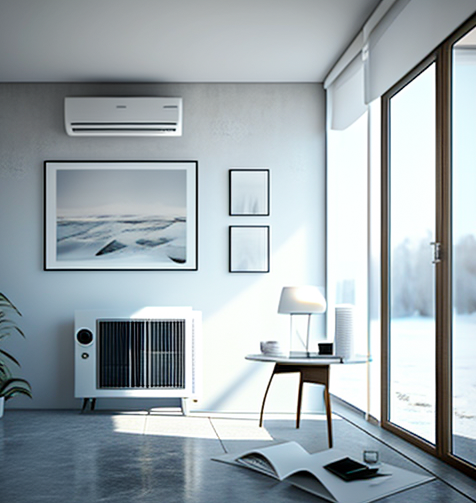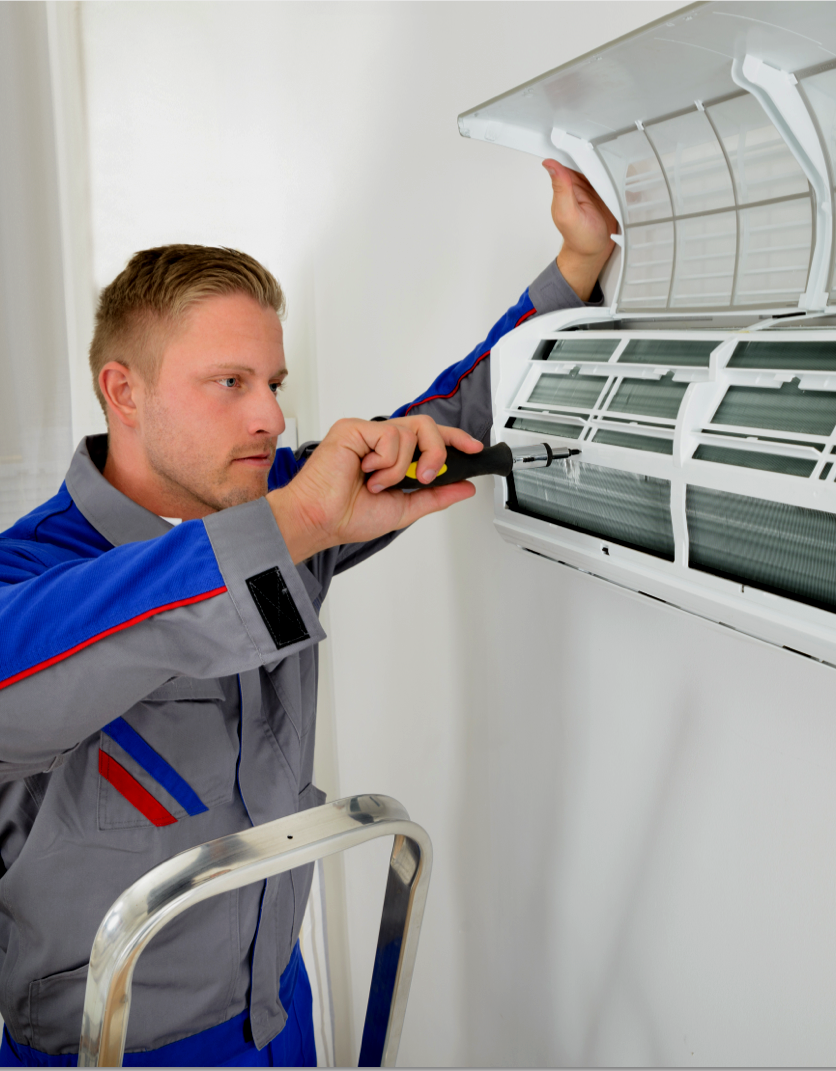How Did People Survive In Arizona Before Air Conditioning
Arizona is a harsh and unforgiving place. For those who have to survive in this state, it can be an incredibly challenging endeavor. Before the invention of air conditioning, surviving in Arizona was especially difficult due to its extreme heat.
In order to understand how people managed to stay alive under these arduous circumstances, it is important to recognize that there are several measures that could be taken in response to the oppressive temperatures. These include building homes with thick walls made from natural materials like adobe or stone; utilizing shade trees strategically placed around dwellings.
The purpose of this article is thus two-fold: firstly, it seeks to examine the various strategies employed by both settlers and Indigenous peoples alike when faced with intense desert heat prior to the introduction of air conditioning; secondly, it aims to recognize the ingenuity and resourcefulness required on part of those individuals attempting survival during this era.

Historical Climate Of Arizona
Arizona has a long history of hot weather, with temperatures often reaching over 100°F in the summer. This extreme environment is due to Arizona’s desert climate and its low latitude location near the center of the United States. As such, prior to air conditioning it was difficult for people living in Arizona’s region to stay cool during the summer months.
The development of air conditioning technology allowed Arizonans to finally find relief from intense heat waves that can last several weeks at a time. However, before this technology became widespread throughout the state, there were strategies used by individuals and communities alike in order to survive without AC.
Shade trees were planted around homes as well as other buildings like churches and businesses which provided some relief from direct sunlight. Additionally, adobe or mud-brick structures could be built using materials found locally and these walls would help insulate interiors from outdoor temperature changes.
Finally, common practices included rolling down windows at night when temperatures cooled off and wearing light clothing made from natural fibers like cotton or linen during the day.
Native American Adaptations
Native Americans living in Arizona have adapted to the hot weather by developing strategies that allow them to survive without air conditioning. One of these strategies is architectural, which involves building structures with thick walls made of adobe and other materials that keep out the heat during the day while allowing cool air to enter at night.
Native American homes were also built using natural ventilation systems such as windows and skylights, making it easier for cooling breezes to flow through them. Additionally, they planted trees around their dwellings to provide shade from the sun’s rays and used reflective surfaces such as white stone or sand on their roofs and floors.
The second strategy employed by Native Americans was dietary. They traditionally ate food high in water content such as melons and cucumbers as well as herbs and spices like cilantro and chile peppers, whose capsaicin has a cooling effect when ingested.
They would also drink beverages like tea or agua fresca made from fruits like mangoes or oranges to help keep themselves hydrated throughout the day. In addition, many tribes gathered near rivers or springs where they could take advantage of natural sources of freshwater for drinking, bathing, cooking, fishing, and irrigating crops.
Early Settlers’ Strategies
Native American tribes developed strategic practices to survive the heat of Arizona. Early settlers, however, had to find innovative ways for their own survival in this hot and arid region. To cope with warm temperatures and dry air, early settlers created methods such as building underground structures and utilizing evaporative coolers.
Underground structures allowed the inhabitants to keep cool during summer months by taking advantage of cooler soil temperature levels beneath the surface. Additionally, evaporation-driven cooling systems were utilized that worked on a principle similar to human perspiration—incoming air was cooled using water before being spread throughout the house or room. This method could reduce indoor temperatures considerably and make living spaces more bearable without electricity or other modern technologies.
Not only did these strategies provide relief from extreme temperatures but they also helped conserve resources since no energy source was required to power them. Although still used today in some areas, these ingenious techniques are now mostly replaced by air conditioning due to its convenience and effectiveness at cooling large interior spaces quickly and efficiently.
Shade And Ventilation Techniques
In order to survive the extreme heat of Arizona without air conditioning, people have relied on shade and ventilation techniques. One such technique is the use of adobe walls that absorb heat but also keep interiors cool by blocking out direct sunlight. Adobe bricks are made from clay and sand and are used in both residential and commercial buildings throughout Arizona.
Additionally, porches with overhangs can be built around a building’s perimeter to provide extra shading while allowing airflow. This type of structure allows for good ventilation during hot days while still providing protection against the sun’s rays. Another common practice is to plant trees near windows as this will create more shade inside the home or business as well as allow for more airflow through open windows. Finally, installing ceiling fans not only aids in cooling but it also helps circulate air within a space creating an even cooler atmosphere than without one.
Clothing And Fabric Solutions
Prior to the invention of air conditioning in Arizona, people relied on clothing and fabric solutions for cooling. In order to keep cool during hot summer days, residents wore light-colored clothing made from loosely woven fabrics like linen or cotton.
Such materials allowed air to flow freely through them, which enabled sweat to evaporate rapidly off their bodies and thus cooler temperatures were maintained.
Additionally, it was common practice for individuals to drape towels over themselves while sitting outdoors; this technique provided extra insulation against the heat. Moreover, some also used wetted handkerchiefs that they kept inside their hats as a way of providing relief from the scorching temperatures by keeping their heads moist and cooled down.
Furthermore, many households hung up damp sheets around windows and doorways so that when a slight breeze blew into the home its inhabitants could benefit from the evaporation process and feel more comfortable. Consequently, these methods served successfully as alternatives before air conditioning became widely available in Arizona.
Traditional Ways Of Staying Cool
Before air conditioning, people in Arizona had to find ways of staying cool. One traditional way was by utilizing shade. People would seek out shady locations such as under trees or awnings and stay there throughout the day.
Additionally, they used light-colored clothing made from natural fabrics like linen that allowed airflow while reflecting some sunlight away from the body.
Homes were also adapted to maximize cooling effects. Adobe structures were built with thick walls for insulation and smaller windows for less heat entering into the home. Some homes were even dug partially underground which helped keep temperatures cooler inside during summer months.
Porches and outdoor patios provided another form of relief from the intense desert sun. By using these strategies combined with spending time at naturally shaded areas, people in Arizona found creative solutions before air conditioning became available.

Impact On Modern Society
For many people, air conditioning in Mesa Arizona has become an essential part of life. Without it, the intense summer heat can be unbearable and put those without access to cooling systems at risk for dehydration, heat exhaustion, or worse.
The introduction of air-conditioning technology changed the way Arizonans lived their lives by making living conditions more comfortable, especially during the long hot summers.
The impact of air conditioning on modern society goes beyond providing a sense of comfort; it also supports economic development. Businesses that rely heavily on customers gathering indoors such as restaurants and retail stores have been able to expand into areas previously considered too uncomfortable due to extreme temperatures.
This increased commerce helps support local economies and create jobs where they may not have existed before due to climate limitations. Additionally, workers are now able to complete tasks with greater efficiency since they do not need to take frequent breaks from work when it is extremely hot outside.
Finally, air conditioning technology has helped protect vulnerable populations like infants and elderly individuals who cannot regulate their body temperature as well as healthy adults can.







